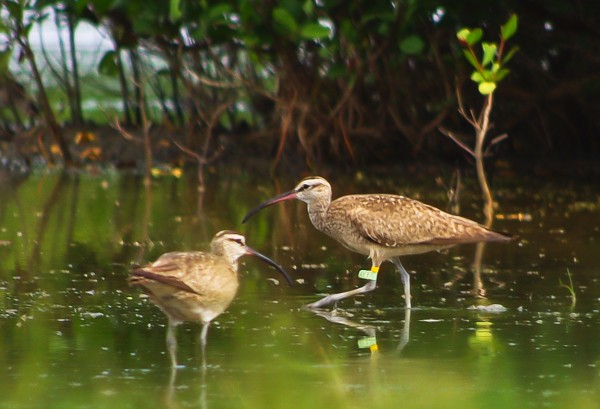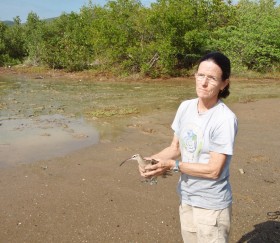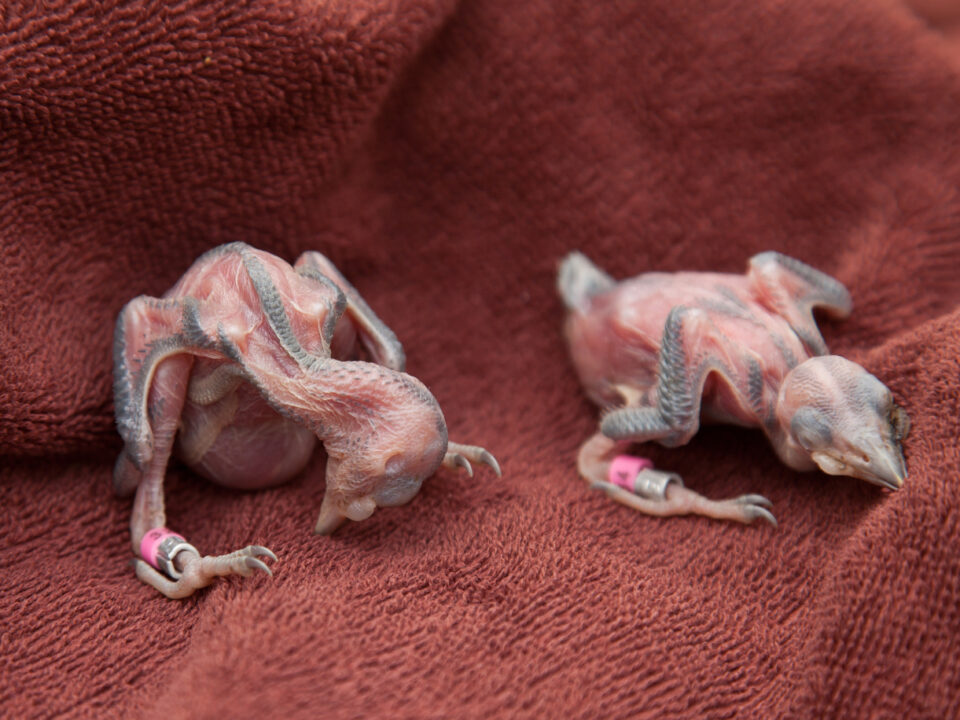Hope Arrives on St. Croix
Camellia Lake Hopping in Virginia Beach 8/21
August 22, 2013Camellia in Surry County Aug 25
August 25, 2013
Hope the Whimbrel has been resighted by locals on St. Croix. She was observed on 23 August by Lisa Yntema at Southgate Pond. Southgate Pond is an Important Bird Area designated by Birdlife International and is part of a coastal reserve owned and protected by St. Croix Environmental Association. This is the fifth time that Hope has returned to her winter territory on St. Croix since she was tagged by The Center for Conservation Biology in 2009. She has traveled at least 62,500 miles (100,000 kilometers) during that time.

Hope with friend at Southgate Pond on 23rd August. Photo by Lisa Yntema.
Hope returns this week without the transmitter that allowed researchers and the world to follow her travels. After more than 4 years the transmitter’s antenna was lost in September of 2012, leading to an expedition to trap her and remove the equipment. Hope’s transmitter was removed but leg bands and her identifying coded flag were left in place for future identification. This is the first time she has been seen since leaving St. Croix on April 2nd for spring migration.

Lisa Yntema with Hope in Great Pond. Hope was captured during on 20 November, 2012 to remove her transmitter. Photo by Fletcher Smith.
Hope spends September through March on her winter territory in the mangroves of Great Pond. Great Pond is a 50-hectare mangrove wetland designated as an Important Bird Area and supports at least 72 bird species during some portion of their life cycle. Her activities are monitored regularly by local ecologist Lisa Yntema.
Hope is one of two dozen birds that have been tracked in a collaborative effort between The Center for Conservation Biology, The Nature Conservancy, US Fish and Wildlife Service, Georgia Department of Natural Resources Non-game Division, Canadian Wildlife Service, Manomet Center for Conservation Sciences, and Virginia Coastal Zone Management designed to discover migratory routes that connect breeding and winter areas and to identify migratory staging areas that are critical to the conservation of this declining species.
Written by
Bryan Watts | bdwatt@wm.edu | (757) 221-2247
Fletcher Smith | fmsmit@wm.edu | (757) 221-1617
August 23, 2013
Related posts
Adult female from Elkins Chimney territory. Both the female and male were lost from this site between 2024 and 2025 nesting seasons and were not replaced. This territory has been occupied since 1995. Five territories were vacated between 2024 and 2025 along the Delmarva Peninsula in VA. Photo by Bryan Watts



